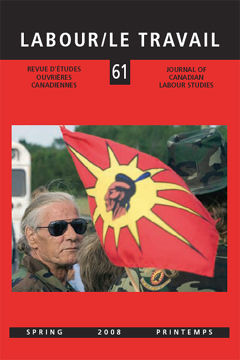Abstract
ABORIGINAL WOMEN have a long history of paid labour in Canada, yet there is little scholarly writing examining their work experiences. Using enfranchisement case files for the Ontario Indian agencies of Parry Sound and Manitowaning, supplemented by oral histories from the Tyendinaga Mohawks, this article explores the work lives of Anishinabe and Mohawk women in the 1920s and 1930s. Aboriginal women’s economic roles involved a continuum of labour ranging from non-cash-oriented subsistence production to commercially- oriented farming, handicraft production, and berry-picking, to wage labour in the capitalist economy. In response to increasing economic hardship on the reserves, First Nations men and women turned increasingly to off-reserve wage labour. While men around Georgian Bay had access to seasonal jobs in lumbering, sawmilling, transportation, and tourism, women faced much more limited employment opportunities in the area. Some responded by moving to towns and cities to work. Further south, the Mohawk women of Tyendinaga could take domestic service jobs and commute from the reserve, or they could move to larger cities to work. For both groups of women, as for women in general, domestic labour was the most common occupation. The Tyendinaga women also had considerable involvement in manufacturing and migrant farm labour. A few women from both groups were able to finish high school and obtain clerical jobs, which offered better pay and shorter hours. Aboriginal women’s occupational distributions were similar to those of other women in the labour force, especially working-class, immigrant, and racialized women. Contrary to today’s persistent media images of Aboriginal unemployment, their records and reminiscences reveal lifetimes of hard work, self-support, and self-respect.
